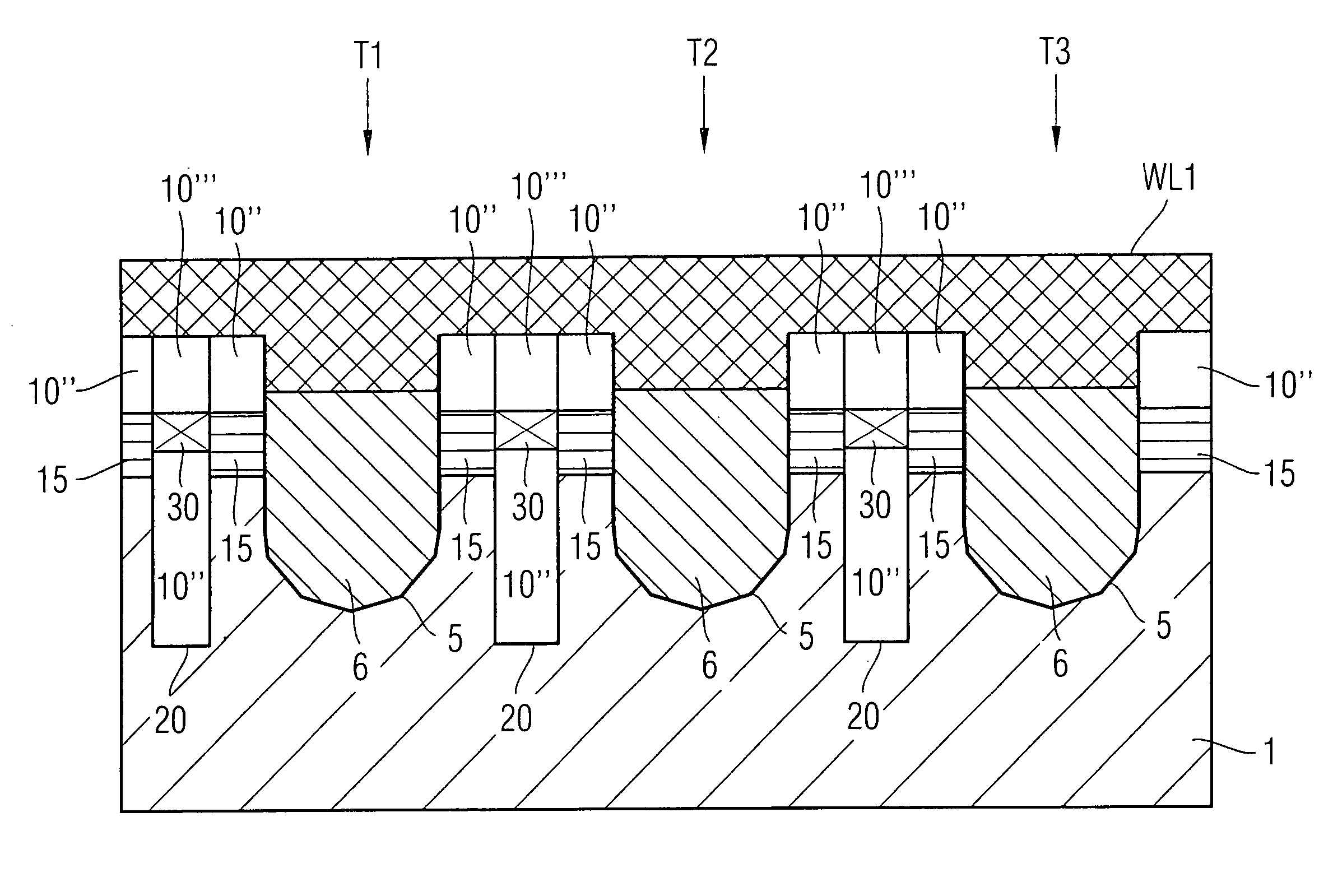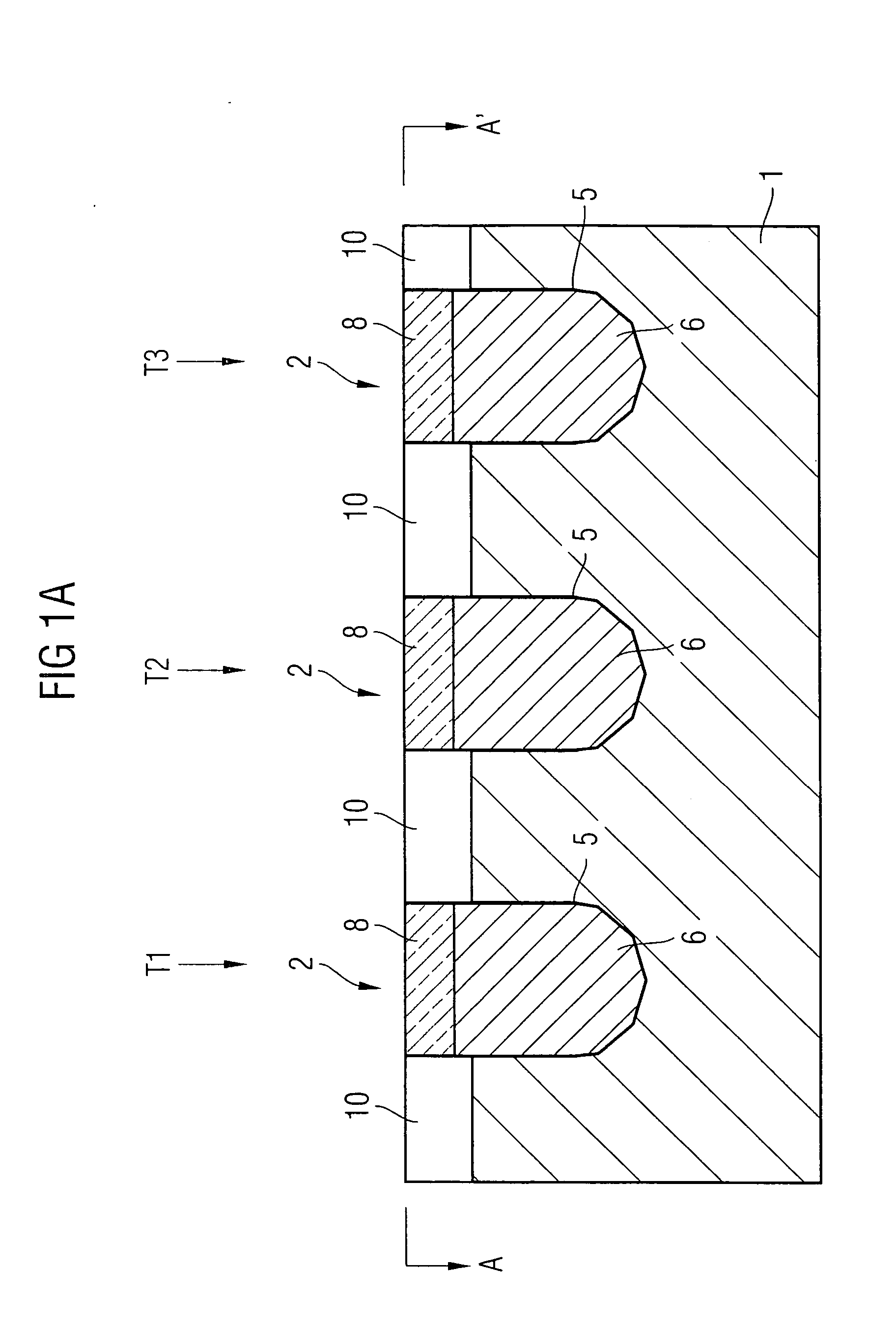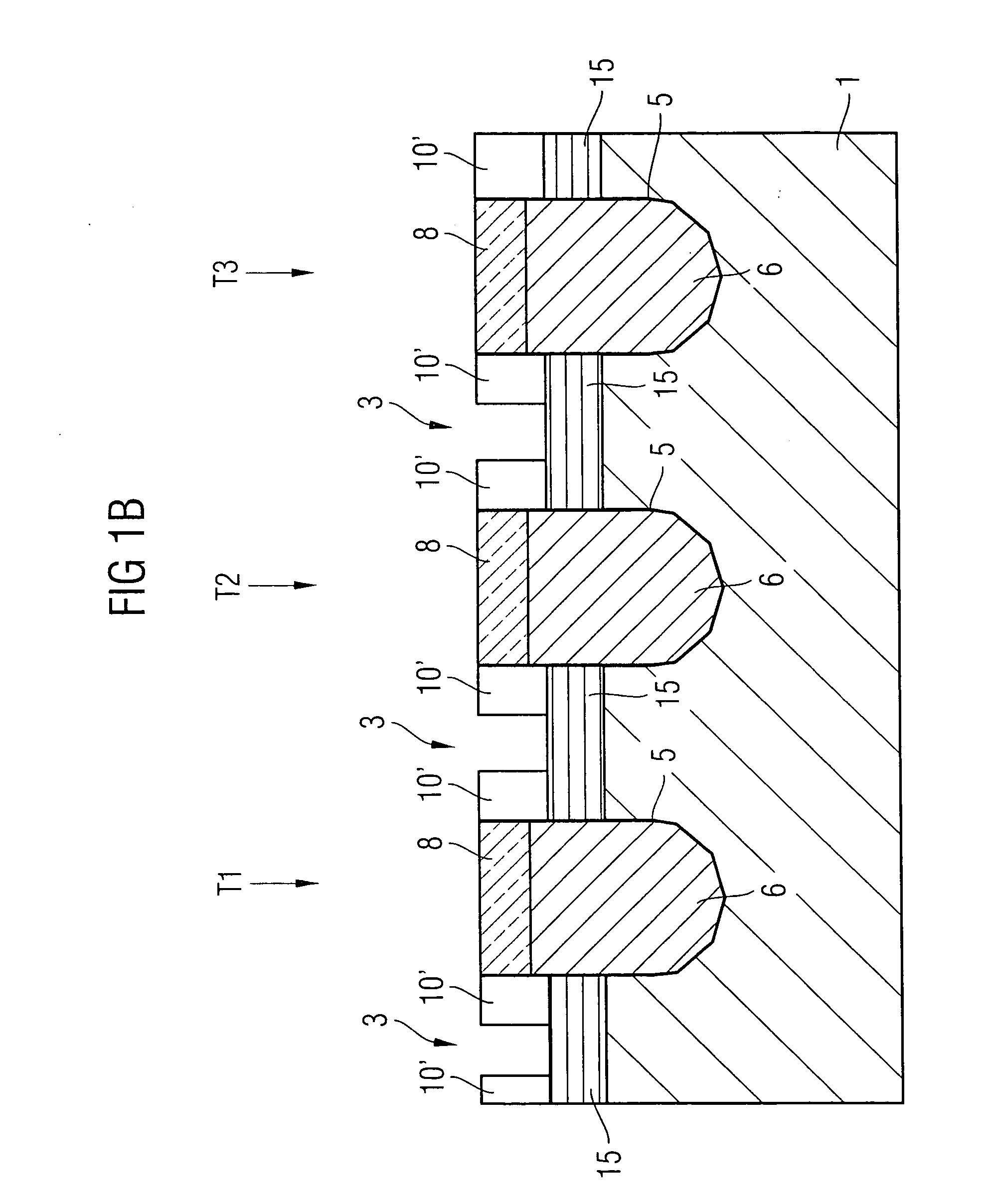NROM semiconductor memory device and fabrication method
a technology of semiconductor memory and fabrication method, which is applied in the direction of semiconductor devices, electrical equipment, basic electric elements, etc., can solve the problems of reducing the production of channel hot electrons, and a punch-through from one transistor to an adjacent transistor can aris
- Summary
- Abstract
- Description
- Claims
- Application Information
AI Technical Summary
Benefits of technology
Problems solved by technology
Method used
Image
Examples
Embodiment Construction
[0030] In the figures, identical reference symbols denote identical or functionally identical components.
[0031]FIGS. 1a-f show diagrammatic illustrations of successive method stages of a method for fabricating an NROM semiconductor memory device as a first embodiment of the present invention, and FIG. 2 shows a plan view of a cell array having an NROM semiconductor memory device in accordance with the first embodiment of the present invention.
[0032] In FIG. 1a, 1 denotes a p−-type silicon semiconductor substrate on which is situated a hard mask 10 which is made of silicon oxide and has been used to produce transistor trenches 2 (which have a rounded lower trench region) in the substrate 1. Reference symbol 5 denotes the ONO triple dielectric which is situated on the trench walls and on the trench bottom, reference symbol 6 denotes a partial polysilicon filling as a gate, which has been produced by deposition, chemical mechanical polishing and etching back, and reference symbol 8 d...
PUM
 Login to View More
Login to View More Abstract
Description
Claims
Application Information
 Login to View More
Login to View More - R&D
- Intellectual Property
- Life Sciences
- Materials
- Tech Scout
- Unparalleled Data Quality
- Higher Quality Content
- 60% Fewer Hallucinations
Browse by: Latest US Patents, China's latest patents, Technical Efficacy Thesaurus, Application Domain, Technology Topic, Popular Technical Reports.
© 2025 PatSnap. All rights reserved.Legal|Privacy policy|Modern Slavery Act Transparency Statement|Sitemap|About US| Contact US: help@patsnap.com



